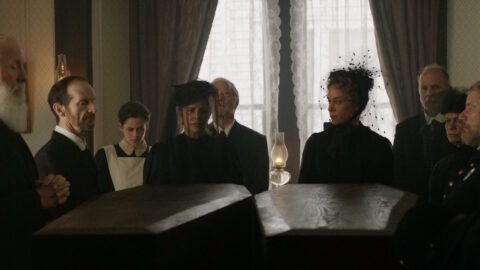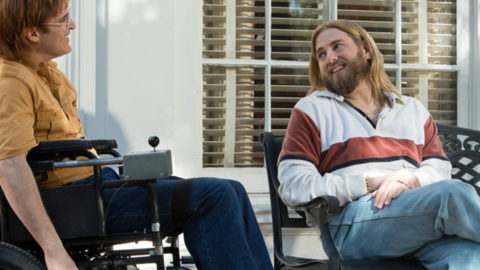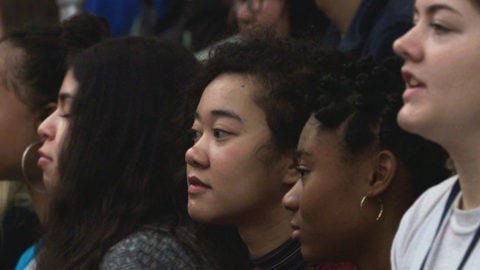Sundance: Frankenstein AI
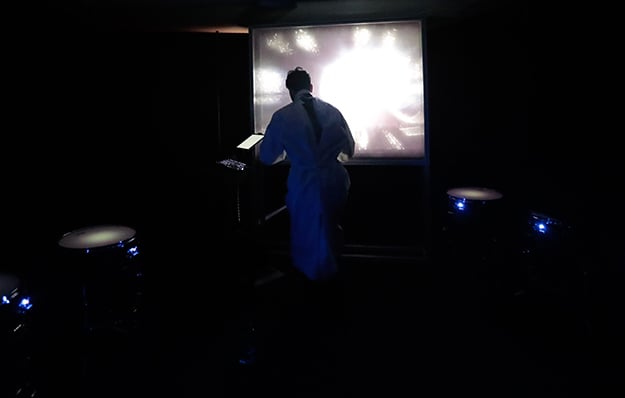
Photo by Rebecca Murga
Twenty years ago, Lance Weiler and Stefan Avalos made The Last Broadcast, a notorious digital-video feature following a group of public access TV hosts into the forest in search of the Jersey Devil. Often compared to The Blair Witch Project, released one year later, also a pioneer in the found-footage genre, the movie set the stage for Weiler’s career of technologically one-upping his peers. While much of the storytelling rooted in VR and other new technologies has been more marketing bark than bite, Weiler has often used tech in his work while at the same time critiquing its emotional capabilities. Or lack thereof.
Weiler’s 2013 TIFF-premiering transmedia project BODY/MIND/CHANGE, for example, hooked up willing participants to a fictive “implant” that measured their emotions to deliver a 3D-printed “device” called a Personal-On-Demand. The PODs varied from one participant to the next and were “designed” from those participants’ responses to a series of games based on David Cronenberg’s 1983 Videodrome. A collaboration with Cronenberg, BODY/MIND/CHANGE combined online games, instructive videos, immersive theater (the sort that forces audience participation), and a slightly murky tech component. Participants were excited about the personalized object they created simply by responding to prompts, but couldn’t quite tell you how it came to be.
This year at Sundance, Weiler, game designer Nicholas Fortugno, and Rachel Ginsberg are unveiling a project-in-progress called Frankenstein AI: A Monster Made by Many, marking the 200th anniversary of Mary Shelley’s canonical novel. It’s all too appropriate that a horror landmark should be used to tackle the applications of AI, as it will likely be both the most helpful and most dangerous technological invention of our time. Weiler says that since the development of AI is a foregone conclusion—with “seamless” algorithms already attempting to predict all of our likes and dislikes—it is up to us to feed humanity, warts-and-all, into those almighty algorithms. So he and a team from Digital Storytelling Lab at Columbia University conceived of a means to make a more human AI through storytelling.
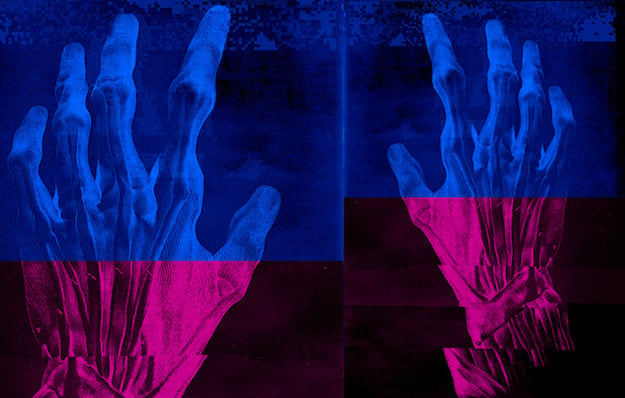
“A lot of tech today becomes very tech-forward—the thing you come to see unveiled is the tech, not a story,” Weiler said in an interview shortly after walkthroughs of the project at Sundance. That tendency is one he aims to turn on its head with Frankenstein AI, envisioned as a kind of repository for people’s feelings, thoughts, emotions, and associations, which will be used to create a thinking, talking AI. The project’s secondary goal is to teach people to love and not fear AI. And in the same fashion as his Cronenberg collaboration, Weiler has again employed immersive theater techniques to sell the concept.
In the installation, part of New Frontier at the Kimball Art Center, participants are first led into a darkened room lit only by red, flickering candlelight, and instructed to tell their assigned partner emotional stories elicited from prompts. “Docents” dressed in the surgical gowns of Dr. Frankenstein solemnly lead you through the experience, never breaking character. The tenor of the conversations in the first room, the creators believe, will be felt in how the participants then choose to match up emotions to body parts, using a little planchette on a screen.
From there, participants move to the second step, in which they gather to call out answers to questions like, “Why do humans want other humans to like them?” A docent types out these answers on an old, heavy typewriter connected to a monitor, which in turn outputs to a giant screen housed in a nearby smoke chamber, which is a plexiglass encasement pumped with a light smoke mist for the Shelley-like aestheticism of it. While the docent types, vague outlines of a human’s face begin to appear on the screen, as the AI is thinking about who it will be…
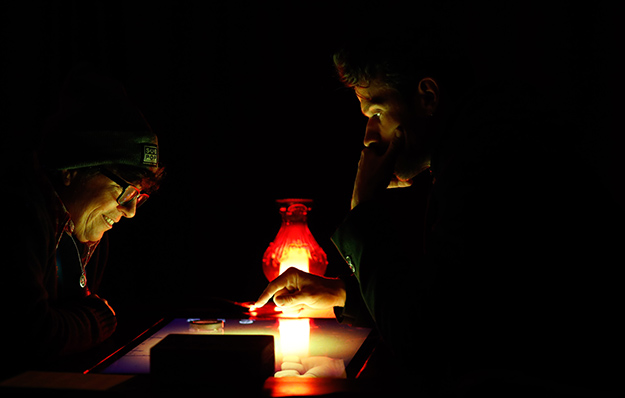
Photo by Rebecca Murga
When the final project is unveiled on Tuesday at the Ray Theatre, a new Frankenstein will be erected from the algorithms, with a face, body, and voice appearing on that giant screen encased in the smoke chamber. A live performer will precisely embody and execute all of the AI’s movements, matching what appears on the screen, essentially bringing the AI to life. Until that time, Sundance participants will be feeding it from their own consciousness, and the AI will be scraping the Internet for more data, drawing thoughts and feelings from random Reddit posts.
Frankenstein AI depends highly upon everyone involved taking the process seriously and giving honest answers, much as the all-consuming Alternate Reality Gaming experiences designed by horror director Darren Lynn Bousman rely on forthrightness. Through online and paper surveys, Bousman collects information on participants of his theater “haunts” up to a year in advance in order to best scare them. Of course, any participants who are facetious in their answers to Weiler and Fortugno’s questions could supply the Frankenstein with just another face of humanity—that of duplicitousness.
That Weiler and his team pair such high-tech ideas with a millennia-old form of performance—theater—adds a layer of charm to a project that’s often so complex and convoluted that it risks exemplifying the dehumanization it’s meant to avoid. Yet Weiler doesn’t consider tech and the expressive arts of theater to be too different from one another.
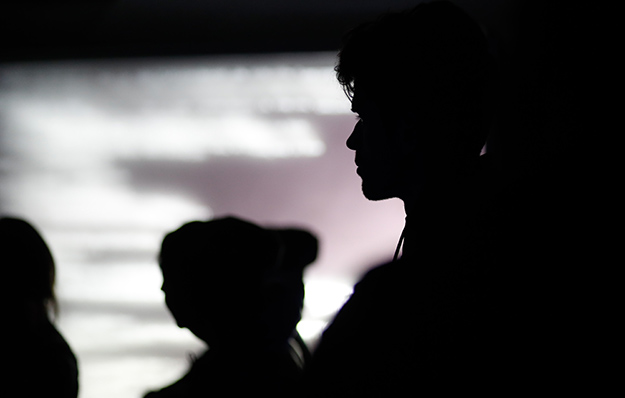
Photo by Rebecca Murga
“If you think about tech like you think about theater—in that we use set design, writing and acting to create one performance—that’s how tech can be approached for a greater experience,” he said. Weiler also revealed a musical component to Frankenstein AI that will accompany the final performance: a series of floor tom drums rigged to vibrate according to the types of emotions described by participants.
In my walkthrough on Friday, as snow began to fall outside, the AI-in-progress gave off an overwhelming sense of melancholy, the drums vibrating with dread. Perhaps this is because every room where participants are ushered into is designed to be dim, foreboding, and Victorian, which likely influences people’s attitudes and what they may say in response to the questions. Or maybe everyone is depressed this year. Neither Weiler nor his cohorts know what the finished Frankenstein will sound like.
“The way I like to speak about that is we know the structure of the performance, but the AI is a thing that thinks on its own,” Fortugno said. “We can’t predict it.”
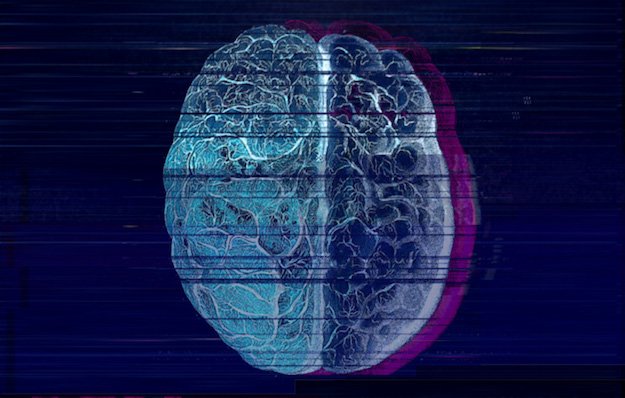
The endeavor seems simultaneously exciting and terrifying if your experience with AI is limited to what you’ve seen in Black Mirror—as mine is. “One thing that’s really important at Digital Storytelling Lab is we’re trying to take into consideration the ethical considerations of the work,” Weiler assured me. This is a departure from most technology-focused university programs, which do not require any kind of applied technologies ethics classes.
“It’s easy to look at these things and be afraid,” Weiler said, because the majority of AI represented in film and other media is treated as something to be feared.
Like Shelley’s monster, Weiler insisted, AI can be taught to be human. Here’s hoping it will be a good human, whatever that means.
Frankenstein AI: A Monster Made by Many is being exhibited at New Frontier at the Kimball Art Center, with a one-time performance on January 23 at The Box at the Ray.
April Wolfe is a film critic, reporter and filmmaker. She was formerly the lead critic for LA Weekly.




